
Swimming pool walls do not last forever; and if your pool was built 20 or 30 years ago, pool wall repairs could be in your future. Damaged pool walls just need a little tender loving care to get them back into shape.
STEEL POOL WALLS:
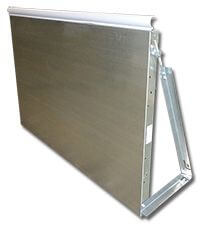
Lets talk about steel wall pools first. Down the road when changing a liner you may find some areas of rust on the walls. If it is just surface rust so you can sand it down and put some Rust-Oleum on it and glue wall foam over the pool walls and you’re good to go. If the rust goes all the way through the pool wall, or the wall is rusted out, you will have to patch the wall with sheet metal.
SHEET METAL POOL WALL REPAIR: Get yourself some sheet metal, sold in squares or in a roll at your local home or hardware store. Cut out the sheet metal with tin snips or bolt cutters, or use entire square pieces to avoid cutting. Use Liquid Nails or other construction adhesive on the back of the patch, just a small bead around the edge, and then use duct tape to tape over the edges of the patch. Wall foam is needed, at least over the repaired wall panel, to cushion the liner and hide the patch.
ALUMINUM POOL WALLS:
An aluminum wall that gets old can become lumpy under the liner. That is a residual coming from the panel decaying and it is something you can scrape off the walls with a drywall knife. Aluminum pool walls can be treated with spray on treatments to protect them from the elements, check with a Marine Supply Co. for Aluminum Hull Protectant. If the walls have been subjected to constant water, aluminum will break down over time. The wall can’t be sealed easily from the backside, but you can use sheet metal repair process described above.
POLYMER POOL WALLS:
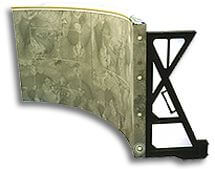
Polymer walls can get stress cracks from any ground movement, especially if the soil is very expansive and subject to freeze/thaw climates. This is a rare situation, but if you notice a crack in a polymer wall, you could/should fill the crack with an elastomeric (stretchy) sealant or caulking. Check the deck – to be sure that it’s not putting pressure on the wall in this area, something that can usually be stopped by supporting the rear of the slab.
WOOD POOL WALLS:
Wood as a pool wall material went out of fashion in the 1970’s, although there are some guys out there (I’m told) that are still building vinyl pools with wood walls. Wood can and will warp and rot over time, and need replacement in 30 years time. A single panel or two can be replaced without too much trouble, but if the supports of the wood wall panels are also wood, then it may be better to replace the pool with a modern pool kit.
OTHER POOL WALL PROBLEMS:
INSECT PROBLEMS: Insects are a big problem also but that is mainly on wood walls, but they can occur in steel and aluminum but that doesn’t really hurt the pool walls but it does effect the pool liners on all pools. There are bugs such as earwigs that eat through vinyl, as do ants. Before replacing a pool liner you must have the bugs treated for so as to not have this problem occur again.
BOWED POOL WALLS: Sometimes a wall will bow inward towards the pool. When that occurs you will have to remove the deck behind the bowed area so the wall can be pulled back to where it was and then reinforce the wall by attaching it to the deck, so it will not bow right back again. If the wall bows outward or away from the pool the same procedures will need to be done the only difference is you will have to push the wall in instead of out. Bowed walls are usually moved back into position by drilling a hole or two in the wall to insert a flange connected to a come-along or winch that you crank to pull out the bow.
BUCKLED POOL WALLS: Not usually a problem with inground pools, buckled pool walls normally happen on aboveground pool walls. If your inground pool wall is buckled, you can remove the deck above first to take the weight off of the pool wall, then you can work the wall panel with 2×4’s and a maul (mini sledge), to bang it back into shape. In severe cases, it may be better to replace the wall panel, or patch over the crumpled area.
DENTED POOL WALLS: Small dents or dings in the pool wall? Not common, and not usually something to worry about, but if they are dented inward, or towards the pool, you have a pretty good chance to bang it back, using a 2×4 and a maul. But do not overdo it, if your wall seems to want to have this small dent or ding, sometimes it may be better to leave it alone.
WALL FOAM: In all cases if you are repairing or replacing a pool wall of any type I strongly recommend putting wall foam on the pool walls. This is done with a spray adhesive and you make a large X with the spray adhesive on the panel and also a line of spray 3 inches from the top and bottom of the panel. Only do about 3 panels at a time so the adhesive hasn’t started to dry. If you stick a garden rake handle thru the roll of foam, it’s an easy way to roll the foam around the pool wall. Wall foam will protect your liner from any repairs you made on the wall or anything that might occur down the road. Roll right over any of the wall openings such as the skimmer, inlets and lights. After the wall foam is on go back and trim out around these with a razor knife. When you do the trimming, go 1 inch larger all around the skimmer, inlets and lights as you do not want the foam to interfere with the gaskets and face plates.
Although repairing a pool wall is really not a difficult job it does take time and a little thinking on your part to figure out the best way to solve your problem so it does not reoccur again. Vinyl pool wall repairs should be a once in a lifetime job, not something you have to do every 5-10 years!

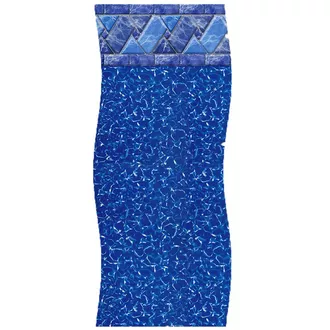
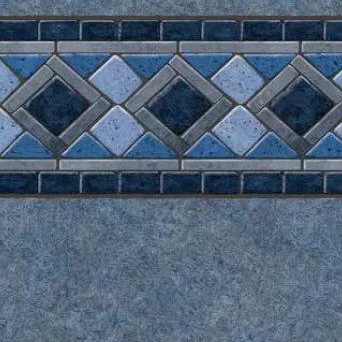
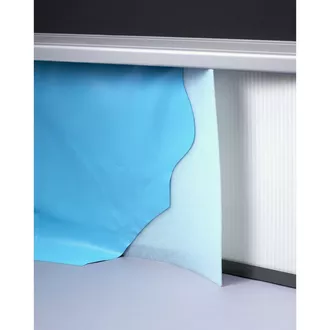
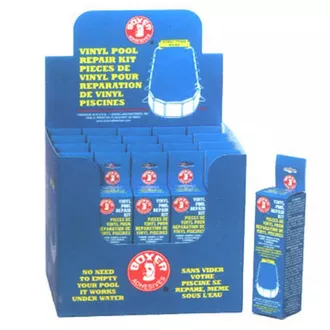
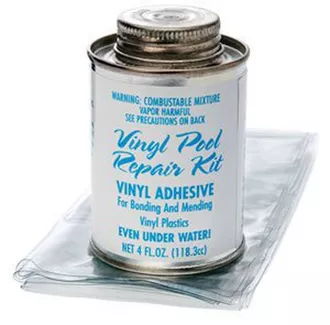
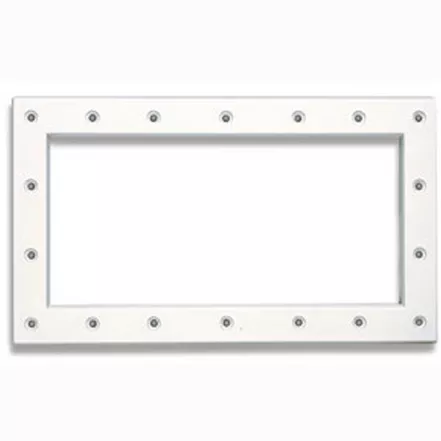
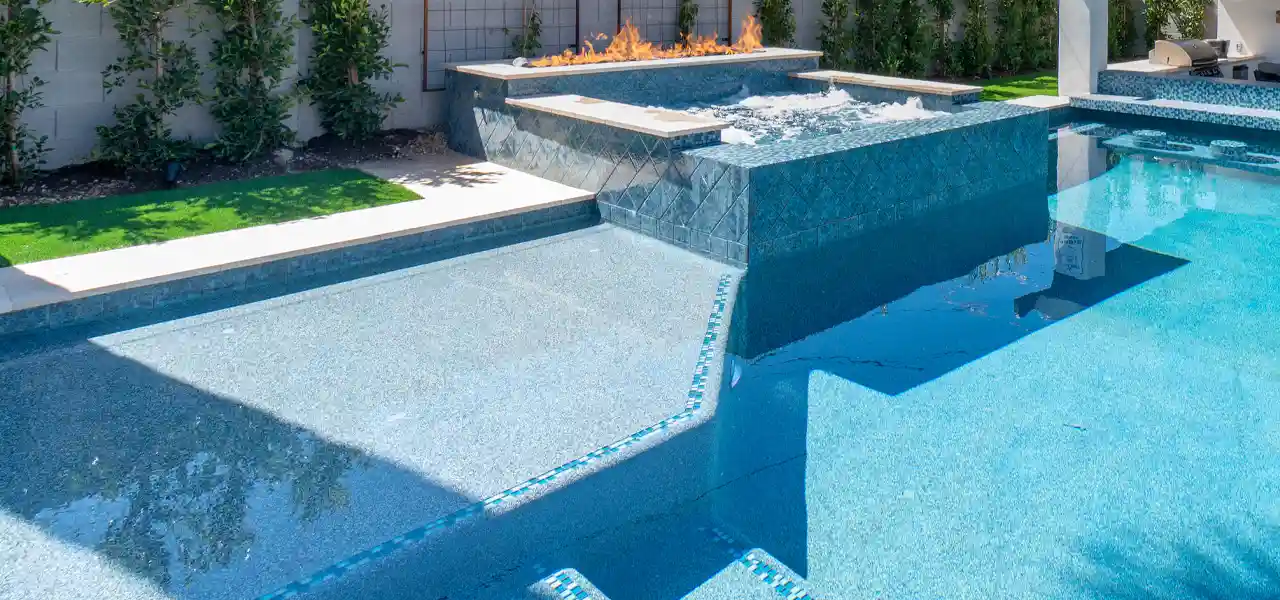
Liner pool, 40 x 20, 8’ deepest. On the incline as it meets the deepest area there is an outward bubble into ground, somewhat larger than vacuum head and 2 or 3 inches out. We had huge rain this past week. Any repair thoughts?
Sounds like a floated liner, aka perched liner, where ground water has gotten underneath. If you can touch it and it feels like water underneath that would confirm. Nothing to do but let it recede when water table drops. Do check your drainage around the pool, make sure nothing has clogged up over the years, and make any changes you can to funnel water around the pool, and reduce any puddle formation, etc.
Larry,
Need steel wall section or sections to replace fiberglass step section in my pool, can you help? My pool walls look just like your steel wall picture on this page.
Thanks so much, Monte
Hi Monte, contact our inground pool kit reps, they may be able to sell an individual wall section, altho not sure if they do…? Try sending a note to Andy, aboyle -at- intheswim.com
How to fix a rusted metal flange?
Naval Jelly to remove the rust along with scraping, then prime and paint with Rustoleum? If you cannot replace it with something in stainless steel or bronze, or plastic.
Hi Larry,
I have a pool repair question. I bought my 1970’s house 5 years ago that came with a 16X32 pool that suffered neglect from the previous owner. I cleaned it up and it works great but now the the metal frame under the coping is rising 1.5″ to 2″ in a couple areas. My guess is that the pool wall is popping up. Is this type of thing fixable or is a brand new pool required? I have a pool builder that’s scaring me into putting in a brand new pool.
Yuki, that does not sound easy to fix. It’s hard to imagine as well, if you have any photos, please send to “swimmers at intheswim.com” – and I’ll email you back. – Davy